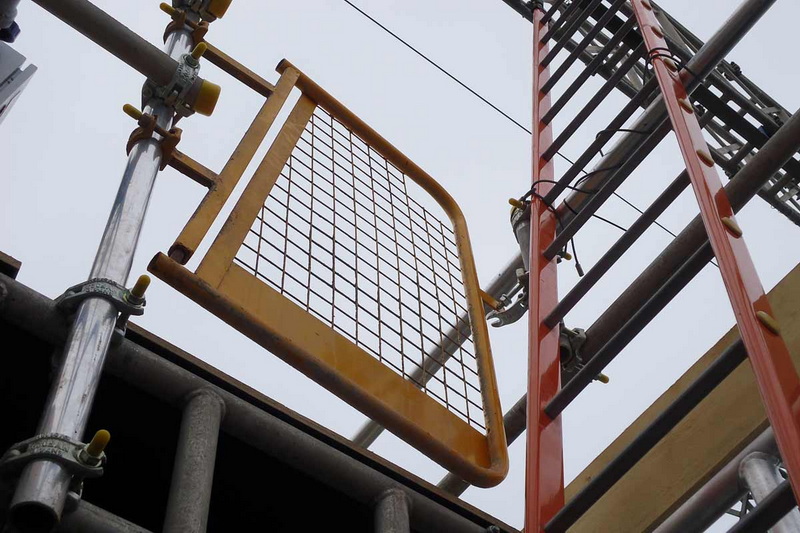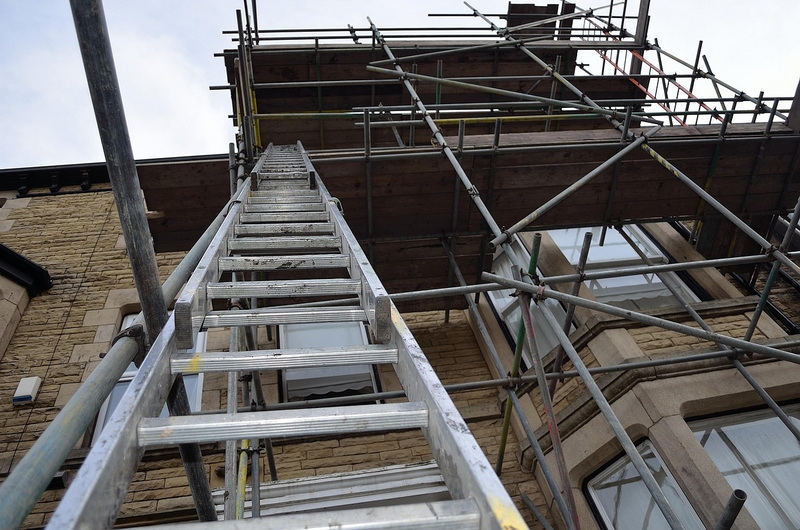Content Menu
● Introduction
● Understanding Scaffolding and Extension Ladders
● Why Workers Consider Placing Ladders on Scaffolding
● Safety Risks of Putting a Ladder on Scaffolding
● Regulatory Standards and OSHA Guidelines
>> OSHA's Position
>> International Standards
● Proper Access Methods for Scaffolding
● Alternatives to Placing Ladders on Scaffolding
● Training and Best Practices
● Additional Considerations When Working at Height
>> Environmental Factors
>> Load Limits
>> Worker Behavior
>> Emergency Preparedness
● Conclusion
● FAQ
>> 1. Can you ever put a ladder on scaffolding?
>> 2. What are the risks of putting a ladder on scaffolding?
>> 3. What is a safer alternative to putting a ladder on scaffolding?
>> 4. Are there any exceptions in OSHA regulations?
>> 5. What should I do if I see someone putting a ladder on scaffolding?
Working at height is a common requirement in construction, maintenance, and industrial settings. Both scaffolding and ladders are essential tools for accessing elevated work areas, but questions often arise about combining these tools for greater reach or convenience. One of the most debated topics is: Can you put an extension ladder on scaffolding? This article explores the safety, regulations, practical considerations, and alternatives to this practice, providing a comprehensive guide for professionals and DIYers alike.

Introduction
Scaffolding provides a stable, elevated platform for workers, while extension ladders allow access to heights that may not be reachable from the ground or a basic platform. However, the idea of putting an extension ladder on scaffolding—sometimes to gain extra height—raises significant safety and regulatory concerns. This article examines whether this practice is ever acceptable, what the risks are, and what safer alternatives exist.
Understanding Scaffolding and Extension Ladders
Scaffolding is a temporary structure used to support workers and materials during construction or repair of buildings and other large structures. It is designed to be stable, with platforms that allow workers to move and work safely at height.
Extension ladders are portable ladders that can be adjusted to various lengths, typically used to reach higher areas. They are designed to be placed on solid, level ground and leaned against a stable surface.
Both scaffolding and ladders have their own specific design criteria and safety considerations. Understanding these is crucial before considering combining the two.
Why Workers Consider Placing Ladders on Scaffolding
There are several reasons why someone might think to put a ladder on scaffolding:
- The work area is just out of reach from the scaffold platform.
- The scaffold is not tall enough, and extending it further is impractical.
- Workers believe it will save time compared to reconfiguring the scaffold.
- There is a lack of awareness about the associated risks.
- Sometimes, limited access to equipment or budget constraints lead to improvisation.
While these motivations are understandable, they do not justify compromising safety. In fact, the risks involved far outweigh any perceived convenience.
Safety Risks of Putting a Ladder on Scaffolding
Placing an extension ladder on scaffolding introduces several serious hazards:
- Instability: Scaffolding platforms are not designed to support the concentrated load of a ladder's feet. This can cause the ladder to slip, tip, or the platform to move unexpectedly.
- Narrow Platforms: Scaffold platforms may be too narrow to properly support a ladder, increasing the risk of the ladder tipping sideways.
- Heightened Fall Risk: If the ladder slips or tips, the worker could fall from a much greater height than if the ladder were on the ground.
- Sideways Thrust: Climbing a ladder exerts lateral forces that can destabilize both the ladder and the scaffold.
- Non-compliance: Most safety regulations specifically prohibit this practice except in rare, controlled circumstances.
- Potential Scaffold Damage: The concentrated pressure points from ladder feet can damage scaffold planks or platforms, compromising the scaffold's integrity.
- Increased Worker Fatigue: Balancing on a ladder placed on a scaffold can cause increased physical strain, leading to fatigue and reduced concentration, which increases accident risk.
Regulatory Standards and OSHA Guidelines
OSHA's Position
The Occupational Safety and Health Administration (OSHA) is clear: Ladders shall not be used on scaffolds to increase the working level height of employees, except on large area scaffolds under strict conditions.
OSHA 1926.451(f)(15) states:
The criteria include:
- The ladder must be placed against a structure not part of the scaffold.
- The scaffold must be secured against sideways thrust.
- Platform units must be secured to prevent movement.
- Ladder legs must be on the same platform and stabilized.
- Ladder legs must be secured against slipping or being pushed off the platform.
Violating these standards can result in citations, fines, and—most importantly—serious injuries or fatalities.
International Standards
Other countries have similar regulations. For example:
- The UK's Health and Safety Executive (HSE) advises against placing ladders on scaffolds due to the instability risk.
- The Canadian Centre for Occupational Health and Safety (CCOHS) also prohibits this practice except under highly controlled conditions.
Compliance with local regulations is essential for legal and safety reasons.

Proper Access Methods for Scaffolding
Instead of placing a ladder on scaffolding, use these safer alternatives:
- Integrated Scaffold Ladders: Many scaffold systems include built-in ladders or stairways for safe access.
- Stair Towers: Modular stair towers can be attached to scaffolds for easy and safe ascent.
- Extension of Scaffold: If more height is needed, properly extend the scaffold structure itself, following manufacturer guidelines.
- Mobile Elevated Work Platforms (MEWPs): For hard-to-reach areas, use a mechanical lift rather than improvising with ladders.
- Use of Scaffold Access Gates and Guardrails: Ensure that scaffold platforms have proper access points and guardrails to prevent falls.
Alternatives to Placing Ladders on Scaffolding
If you find yourself tempted to put a ladder on scaffolding, consider these alternatives:
- Reconfigure or extend the scaffold: This is the safest and most compliant option.
- Use a taller scaffold tower: Select a scaffold system that reaches the required height.
- Employ a mobile access platform: Scissor lifts or boom lifts can provide safe access to elevated areas.
- Request professional advice: Consult a competent person or safety officer to evaluate the safest method for your specific task.
- Use adjustable scaffold platforms: These allow for height adjustments without compromising safety.
- Implement fall protection systems: Harnesses and lifelines can be used in conjunction with proper scaffold access for additional safety.
Training and Best Practices
- Always receive training on scaffold and ladder safety before use.
- Inspect all equipment before each use.
- Follow manufacturer instructions and OSHA regulations at all times.
- Never improvise or take shortcuts with safety.
- Report unsafe conditions to a supervisor immediately.
- Use personal protective equipment (PPE): Helmets, harnesses, non-slip footwear, and gloves.
- Maintain clear communication: Ensure all workers understand the access plan and safety measures.
- Plan the job: Assess the work area to determine the safest access method before starting.
Additional Considerations When Working at Height
Environmental Factors
Weather conditions such as wind, rain, or ice can increase the risk of falls and ladder instability. Never put a ladder on scaffolding during adverse weather.
Load Limits
Both scaffolds and ladders have load limits. Overloading either can cause structural failure. When putting a ladder on scaffolding, the combined load may exceed safe limits.
Worker Behavior
Fatigue, rushing, or distractions can lead to unsafe decisions like putting a ladder on scaffolding. Promote a safety culture where workers feel empowered to stop unsafe work.
Emergency Preparedness
Have a rescue plan in place in case of falls or accidents. Quick response can save lives and reduce injury severity.
Conclusion
Can you put an extension ladder on scaffolding? The answer is almost always no. Placing a ladder on a scaffold platform is unsafe, violates safety regulations, and exposes workers to unnecessary risk of falls and injury. OSHA and industry best practices are clear: ladders and scaffolding are each designed for specific purposes, and combining them in this way is almost never justified. Instead, use integrated access systems, extend the scaffold properly, or use a mechanical lift to reach higher work areas safely.Prioritizing safety by following regulations, using proper equipment, and receiving adequate training will protect workers and improve productivity on any job site.

FAQ
1. Can you ever put a ladder on scaffolding?
Generally, no. OSHA prohibits placing ladders on scaffolds to gain extra height except in rare cases involving large area scaffolds and only when strict safety criteria are met.
2. What are the risks of putting a ladder on scaffolding?
Risks include instability, increased fall hazard, tipping due to sideways thrust, and non-compliance with safety regulations, all of which can lead to serious injury or death.
3. What is a safer alternative to putting a ladder on scaffolding?
Use integrated scaffold ladders, stair towers, or mobile elevated work platforms. If more height is needed, extend the scaffold properly rather than improvising with a ladder.
4. Are there any exceptions in OSHA regulations?
Yes, OSHA allows ladders on large area scaffolds under strict conditions: the ladder must be stabilized, the scaffold secured, and a competent person must determine it is feasible and safe.
5. What should I do if I see someone putting a ladder on scaffolding?
Report the unsafe practice to a supervisor or safety officer immediately. Encourage the use of proper access methods and adherence to safety regulations.






















